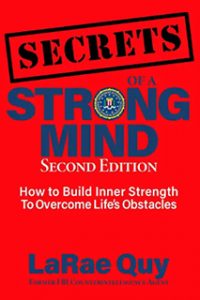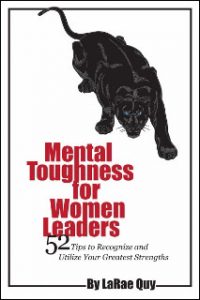As proof that we’ve become a society of wimps, consider this: new research confirms that when we run out of legitimate threats to face, we begin to call things that we judged to be harmless in the past now as a threat.
The study was undertaken to understand how legitimate victims of violence have been marginalized so that others can use the word violence to describe them any time they feel uncomfortable.
Remember the old days when trauma meant someone had been genuinely hurt, often so severely they could no longer function? Now, an unpleasant encounter, an aggressive look, or an offensive word can hurl snowflakes into such a conundrum that they need to seek out a safe place where they can simper until they have the strength to face the real world.
To be kind to these crybabies, researchers refer to the malady that affects certain segments of our population as ‘concept creep’. The more comfortable a society becomes, the more small indiscretions and problems are morphed into huge obstacles in our minds.
Shit happens. Life is hard. Pain is inevitable. Growth is optional—LaRae Quy
It takes a strong mind to grow from your pain and obstacles. Are you mentally tough? Take this evidence-based, FREE Mental Toughness Assessment
Most emotions, like gratitude and compassion, can be developed when things are going well. To develop resilience, however, you need to get knocked down more than once. Over time, the more you’re knocked down, the easier it becomes to climb back onto your feet because you become stronger, smarter, and less afraid to get knocked down again each time you do.
Resilient people don’t become successful despite their trauma; they become successful because of it. None of us look forward to trauma in our lives, but it’s a fact of life. Pretending that it won’t happen is not a practical approach.
Most of us live through at least five or six traumatic events in our lifetime—we lose someone we love, get divorced, lose a job, experience a serious illness—the list goes on. If we survive these events, we come out stronger and wiser.
Trauma does not have to destroy us. The prevalence of post-traumatic growth was illustrated in a recent study that shows over 50% of people who experience a traumatic event also experience at least one form of personal growth in the following months and years if they have the right mindset.
“Attitude is that little thing that makes all the difference”—Winston Churchill
The key is to approach challenges and obstacles in ways that will grow resilience. Here are 5 ways to be resilient when times get tough:
1. Pay Attention To Negative Emotions
There’s so much emphasis on happiness these days that it’s skewered our understanding of life in the real world. We’re told we need to learn how to increase positive emotions and decrease negative ones. Positive thinking is a cornerstone of mental toughness, but it’s not a free pass to bury our heads in the sand about the crap that shows up in life so we can pretend it doesn’t exist.
Resilient people realize negative emotions are normal and healthy, so they pay attention. The problem isn’t that we experience them; it’s that they rear their ugly head when we’re taught to suppress or avoid them at all costs.
Remember, negative emotions surface for a reason. All emotions can be useful; the key is to regulate them so you can choose the situations that are more beneficial to you
Don’t fool yourself into thinking that suppressing negative emotions makes you emotionally healthy. You can wear an emotional diaper and hope things will clean up themselves, but guess what? When you fight a feeling, it only gets stronger. In her book, The Power of Negative Thinking, Julie Norem explores the importance of both positive and negative emotions.
How To Make It Work For You: It’s not always possible to turn away from disturbing or unfavorable situations, but don’t ignore negative emotions in hopes they’ll go away. To counter them, it’s important to 1) acknowledge the emotion, and 2) name it for what it is even if it’s unflattering—especially if it’s unflattering. Keep it to a couple of words, though, because if you enter into a dialogue about the negative emotion, you give it the opportunity to take root and become even more powerful.
2. Don’t Stop Because It Hurts A Little

Millions of dollars are spent on self-help books, therapists, and drugs in an attempt to outrun adversity and the pain that comes with it. Heads up, folks—pain is part of the human condition, and the sooner you embrace this fact of life, the more content you’ll be.
Resilience is akin to a muscle. You can sit on your butt all day, watch TV, and eat potato chips. Or, you can exercise, strengthen your bones, and improve circulation. Our brain works in much the same way, so it’s your choice to either take the steps to build a strong mind or let it decay into a pity puddle where you’re too precious to be inconvenienced by something as mundane as pain.
Did I mention wimps?
Every decision you make in life comes down to this: are you willing to embrace the pain that comes with pursuing things that matter to you? The pursuit of happiness is the active avoidance of growth and maturity. It’s childish to believe self-righteous bullshit that justifies your temper tantrums and rage because the world is not perfect—as you see it.
“Don’t be afraid of your fears. They’re not there to scare you. They’re there to let you know that something is worth it” – C. JoyBell C.
How To Make It Work For You: Don’t avoid pain; manage your response. Be a graceful and strong beacon for successfully navigating the depths of your emotions. The pain that travels with adversity will produce virtues like bravery, integrity, and humility. Since pain is a universal truth, be smart enough to learn and grow from life’s experiences. All that is required of you is to discover its value and meaning.
3. Success Is Not For The Faint-Hearted
Our culture glorifies frailty. Psychiatrist Steven Wolin suggests that there’s an entire industry that turns people into victims by having them dwell on the traumas in their lives rather than grow stronger from them.
Resilience is not the ability to escape unscathed. Resilient people have scars from warfare. They struggle like everyone else.
Neuroscience research shows there’s only one real way to deal with fear: to face it head-on. As an FBI agent, I was taught to think: “I’m scared, but I can learn from this. It will make me stronger.”
Let’s get one thing straight—everyone feels uncomfortable when they move toward the threat or obstacle in front of them, but it’s one of the most effective ways to build both resilience and confidence.
“Between stimulus and response, there is a space. In that space is our power to choose our response. In our response lies our growth and our freedom”—Viktor E. Frankl
How to Make It Work For You: Name your fear. Your ability to experience and describe your emotions with a high level of accuracy indicates how you can leverage them. Being fearless doesn’t mean eliminating fear; it means you know how to manage it.
4. Question The Catastrophe

Many of us spiral into a sense of catastrophe when we don’t get our way, whether it be an election or a promotion. We’re overcome with a sense of hopelessness. We exaggerate the effect of something negative in our lives and imagine our entire lives are about to fall apart.
If we don’t question the catastrophe, we give our imagination permission to expect the worst possible outcome. While it’s smart to be aware of possible negative outcomes, when we assume the worst will happen, we set ourselves up for unnecessary stress.
The catastrophic thoughts themselves aren’t the real problem; it’s that if we’re not careful, we can really buy into them. When we do, we experience these thoughts as facts. If we allow ourselves to believe our thoughts are true, we get caught up in them and are no longer present to life in the here and now.
Bam! We throw resilience out the window, roll over, and play the victim.
“Victorious warriors win first and then go to war, while defeated warriors go to war first and then seek to win”—Sun Tzu
How To Make It Work For You: Catastrophizing is simply letting our negative thoughts take control. Instead, observe the negative thoughts as they come and as they go. Each time you acknowledge a negative thought and exercise control over it, you develop resilience. It takes courage to look inwardly into the darkest part of your personality. We all contain bits of light and dark; we all contain bits of gold and lead.
5. Put A Different Label On Your Situation
Often, we can be more resilient if we simply reframe our situation. Emotions like anger and fear are both freighted with energy, so rather than express them in a negative way, channel them into a more positive one. Is it a lump of coal or a diamond in the making?
It takes skill to manage our emotions; we get better at it with time and practice. The same goes for the way we relabel our situation. If we let the energy from our emotions decide our actions, we won’t always cultivate behavior that will best serve us.
How to Make It Work For You: Research in neuroplasticity has shown that we can rewire our brains and be more resilient when we change the way we think about a challenge. Simply by putting different optics on our situation, we can change the way we think about it.
© 2019 LaRae Quy. All rights reserved.

You can follow me on Twitter, Facebook, Instagram, AND LinkedIn
Are you mentally tough? Take this evidence-based, FREE Mental Toughness Assessment
Check out my new online training program at www.SecretsOfAStrongMind.com
Get my new book, “Secrets of a Strong Mind (second edition): How To Build Inner Strength To Overcome Life’s Obstacles”

Author of “Mental Toughness for Women Leaders: 52 Tips To Recognize and Utilize Your Greatest Strengths”



Love your post LaRae! Being resilient empowers us to ride the waves of disappointment and hurt and land on top as victors. Number 3 really resonates with me- naming our fears. I find that when I become paralyzed with fear I can deal with it more effectively by naming it (as you say) and reminding myself what it reminds me of in my past experiences. That way I can jump into action using my tools that worked in the past. Thanks LaRae!